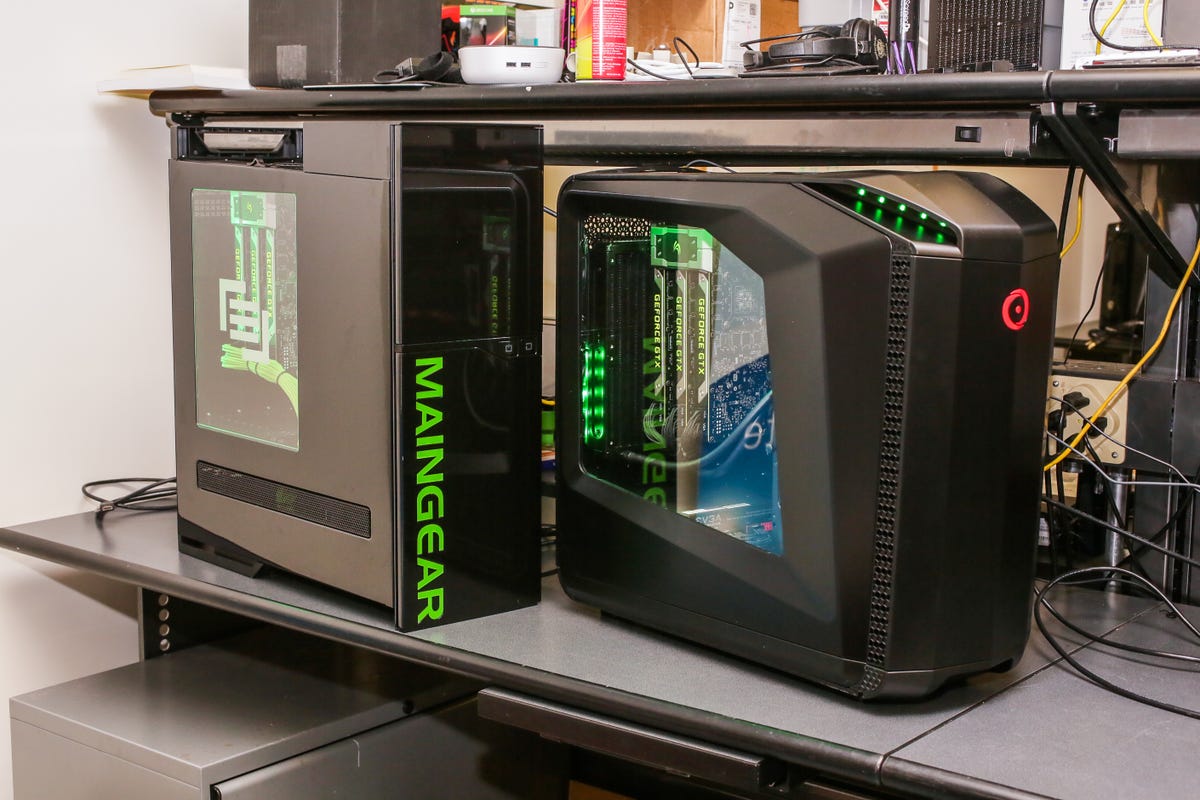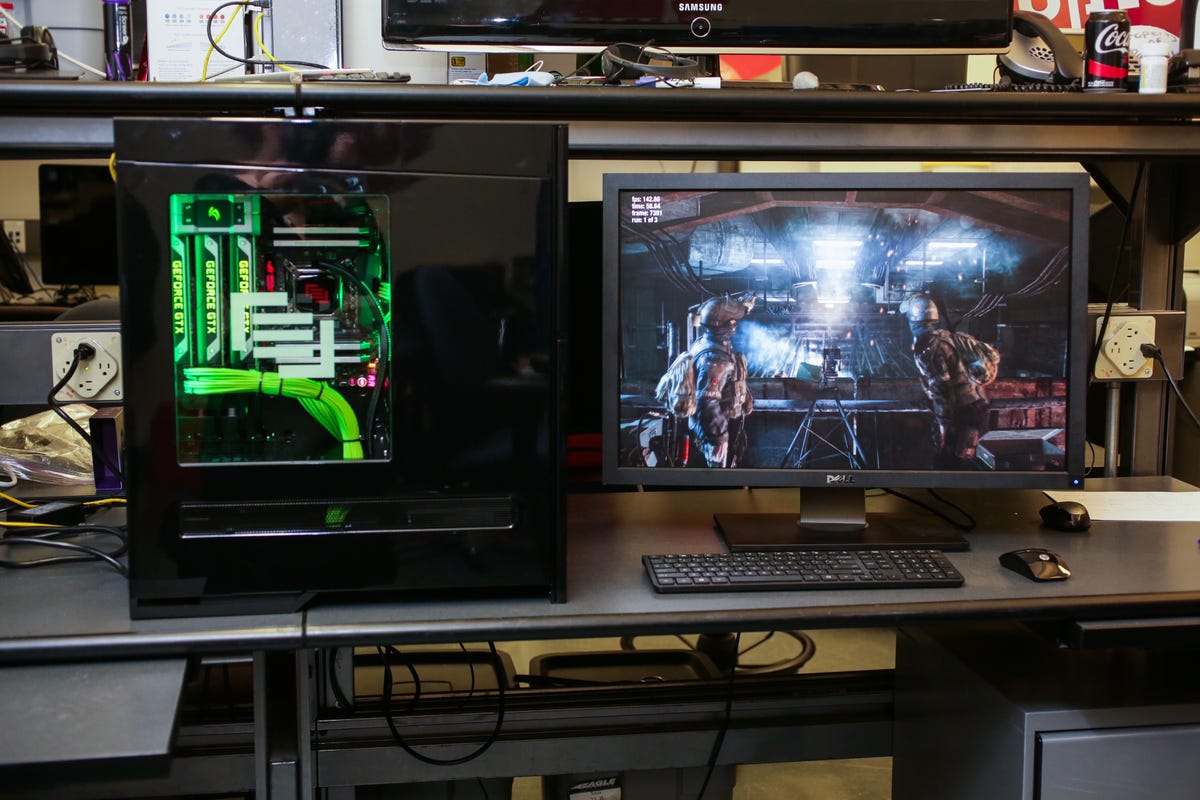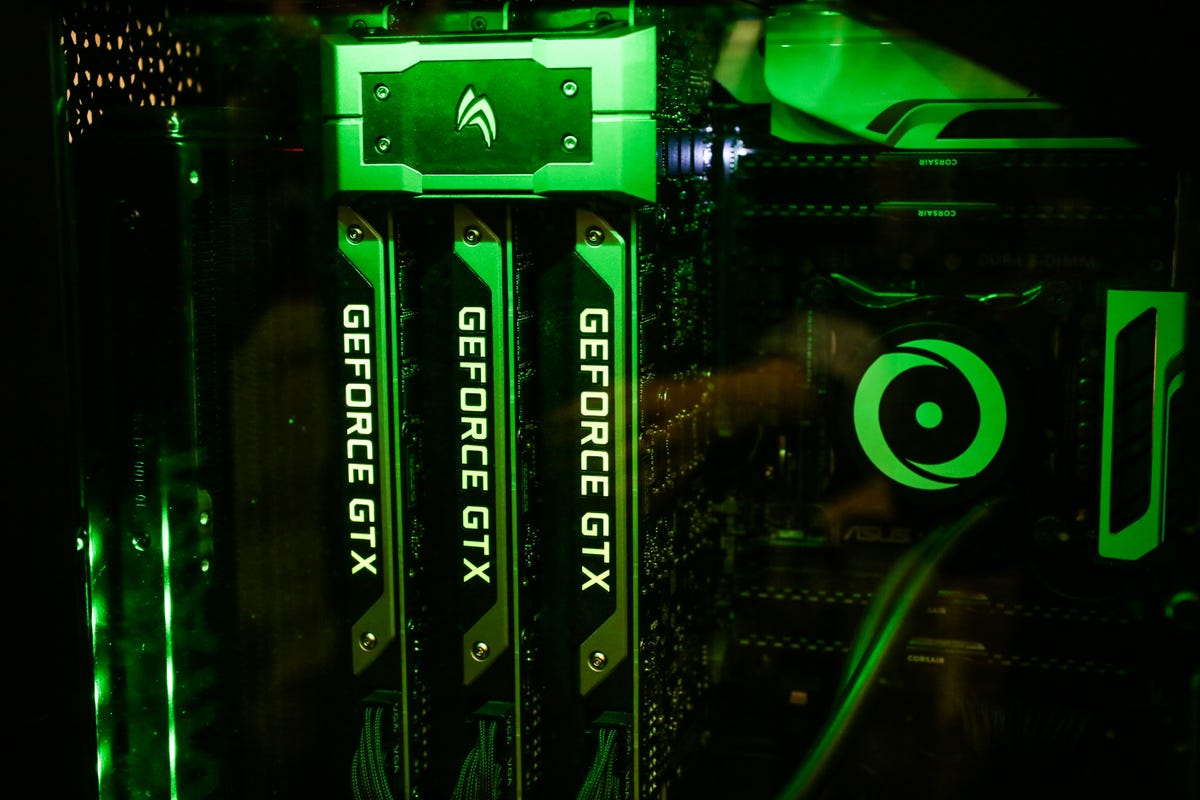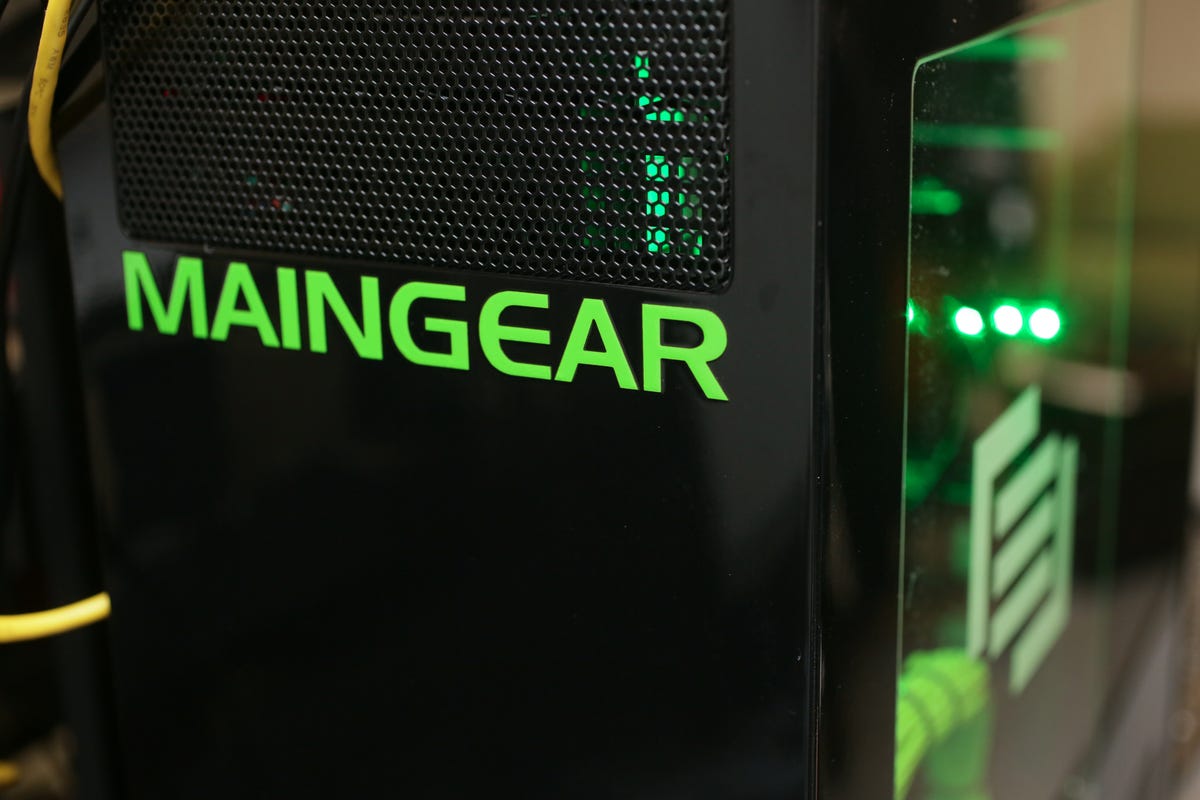
Sarah Tew/CNET
PC gamers who have stuck with big, bulky desktops are being rewarded for not making the switch to gaming laptops. Nvidia has released a new generation of desktop graphics cards under the imposing name Titan X, intended to outshine the company’s GeForce GTX 980 models, which were introduced in September, 2014.
These new cards, if purchased individually, would cost up to $1,000 each in the US (£879 in the UK; Australian pricing and availability has yet to be announced). But you’ll want to budget for double or triple that amount, as Titan X is targeted at the most discerning of PC gaming hardware enthusiasts, who would rather stack two or three cards together at once in an SLI formation, or “Scalable Link Interface” — where multiple graphics cards are daisy-chained together to maximize performance.


Sarah Tew/CNET
Rather than adding one or more Titan X cards to your current desktop, another option is to build or buy a new rig designed to house multiple video cards, although that’s a potentially even more expensive option. Both of the early custom-built Titan X desktop gaming rigs we’ve tested have three of the new cards in an SLI configuration, along with top-end, overclocked Intel Core i7 CPUs, lots of RAM, and water cooling systems to keep everything running smoothly even when pushing the hardware.
A single Titan X card itself includes 12GB of GDDR5 RAM and 3,072 computational cores that are part of Nvidia’s Cuda (Compute Unified Device Architecture) platform. In other words, these systems are designed to play even very challenging games at high/ultra detail settings at very high frame rates.


Sarah Tew/CNET
Our first test system is a Shift desktop from Maingear, a long-time player in the custom gaming PC market. The second system is a Millennium desktop from Origin PC, a PC maker founded by former Alienware employees. Both companies are known for excellent build quality, hands-on customer support, and for getting new processors and graphics cards into shipping systems quickly. Both systems were reasonably close in specs, as seen in the chart below.
Maingear Shift (Nvidia GeForce GTX Titan X x3)
| Price as configured | $8,800 |
|---|---|
| PC CPU | (OC) 4.5GHz Intel Core i7 5960X |
| PC memory | 16MB DDR4 SDRAM TKMHz |
| Graphics | (3) Nvidia GeForce GTX Titan X |
| Storage | (2) 256GB SSD RAID 0 2TB HDD |
| Networking | 802.11ac wireless, Bluetooth 4.0 |
| Operating system | Windows 8.1 (64-bit) |
Origin PC Millennium (Nvidia GeForce GTX Titan X x3)
| Price as reviewed | $7,800 |
|---|---|
| PC CPU | (OC) 4.5GHz Intel Core i7 5960X |
| PC memory | 16MB DDR4 SDRAM TKMHz |
| Graphics | (3) Nvidia GeForce GTX Titan X |
| Storage | 1TB SSD 4TB SSHD |
| Networking | 802.11ac wireless, Bluetooth 4.0 |
| Operating system | Windows 8.1 (64-bit) |
Setting up both desktops side by side in the CNET Labs, we ran a series of gaming benchmarks at both 1,920×1,080 resolution and at 4K resolution (which is 3,840×2,160). We were able to compare those two new systems with a variety of other gaming computers, including a similarly overclocked desktop with three of the last-gen GeForce GTX 980 cards, as well as a very high-end gaming laptop that combines one current top-of-the-line laptop graphics card, the GeForce GTX 980M, with an actual desktop CPU, for an unusual combination of desktop and laptop parts.
Note that these are preliminary tests, and we expect Nvidia will have numerous near-future driver updates that might affect the performance of these systems. But, as the performance charts below show, the Titan X is indeed a powerful card, especially when it comes to driving games at 4K resolution, which is the next great barrier for PC gaming. Even a single 900-series GPU can run some games at 4K, but that often requires dialing down the detail levels and other options to medium settings at best. With the Titan X, we saw very fast frame rates at 4K, and unbelievable ones at 1080p.


Sarah Tew/CNET
Metro: Last Light (High, 1,920 x 1,080)
Maingear Shift (Nvidia GeForce GTX Titan X x3)
110
Origin PC Millennium (Nvidia GeForce GTX Titan X x3)
106
Maingear Shift (Nvidia GeForce GTX 980 x3)
90
Origin Eon PC 15-X (Nvidia GeForce GTX 980M)
44
Note:
Longer bars indicate better performance (FPS)
Metro: Last Light (High, 4K)
Maingear Shift (Nvidia GeForce GTX Titan X x3)
47
Origin Millennium (Nvidia GeForce GTX Titan X x3)
40
Maingear Shift (Nvidia GeForce GTX 980 x3)
36
Origin Eon 15-x (Nvidia GeForce GTX 980M)
14
Note:
Longer bars indicate better performance (FPS)
Shadow of Mordor (High, 1,920 x 1,080)
Origin PC Millennium (Nvidia GeForce GTX Titan X x3)
151
Maingear Shift (Nvidia GeForce GTX Titan X x3)
150
Maingear Shift (Nvidia GeForce GTX 980 x3)
123
Origin Eon 15-x (Nvidia GeForce GTX 980M)
99
Note:
Longer bars indicate better performance (FPS)
3DMark Fire Strike Ultra
Origin Millennium (Nvidia GeForce GTX Titan X x3)
12,124
Maingear Shift (Nvidia GeForce GTX Titan X x3)
11,696
Maingear Shift (Nvidia GeForce GTX 980 x3)
9,390
Origin Eon 15-x (Nvidia GeForce GTX 980M)
2,293
Note:
Longer bars indicate better performance (FPS)
The biggest catch is that these systems can cost more than 20 times what a living room game console can, although even the Xbox One and PlayStation 4 struggle to hit 1,920×1,080 in some games.
Perfectly good gaming laptops that can play modern games at 1080p resolution and high detail settings (and even play some games at 4K ) are available for under $2,000, but if you’re one of the very few willing and able to spend multiple thousands on the very latest PC gaming hardware, at least you now have some hard performance numbers to back up your decision.
We’ll be updating this story with more test results as we conduct additional benchmarking.




